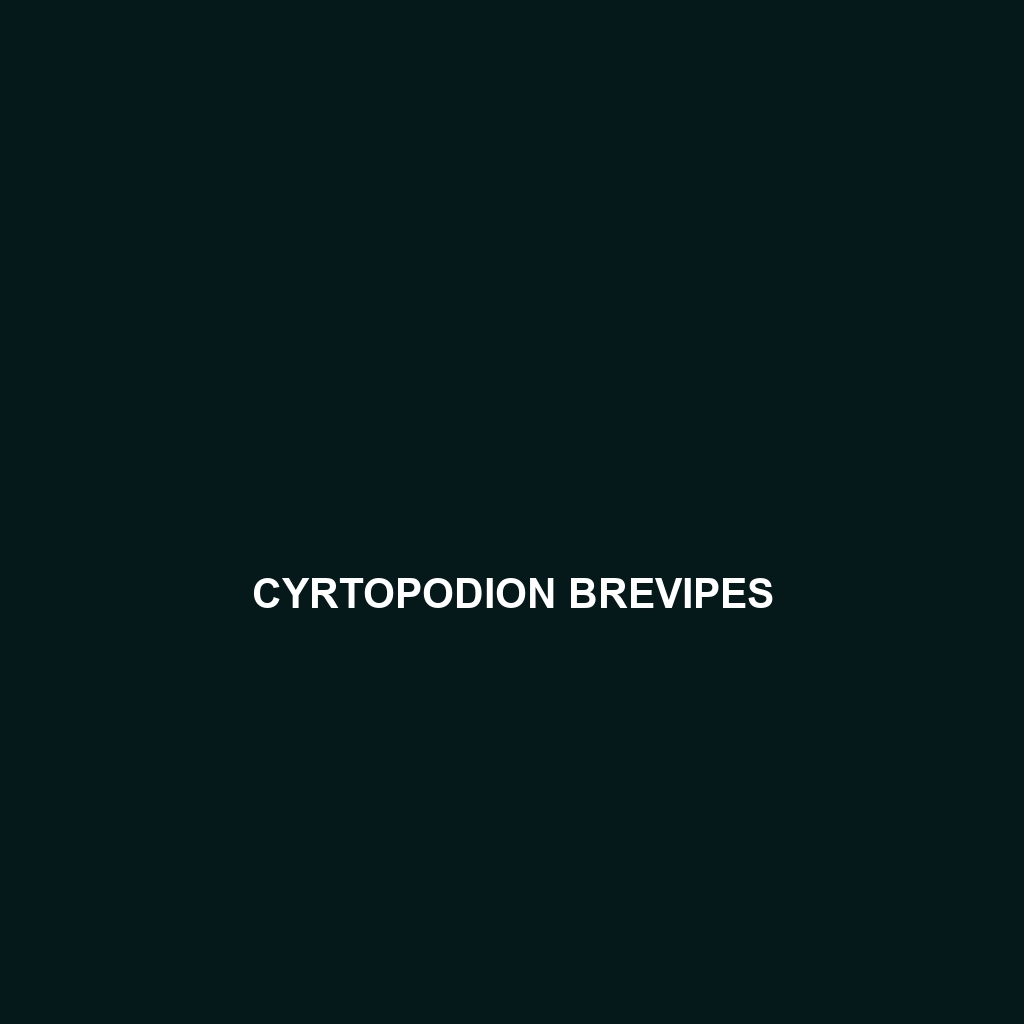Cyrtopodion brevipes: Species Description
Common Name: Cyrtopodion brevipes
Scientific Name: Cyrtopodion brevipes
Habitat
Cyrtopodion brevipes, commonly known as the short-toed gecko, is primarily found in arid and semi-arid regions across the Middle East and parts of South Asia. This species thrives in environments such as rocky hillsides, sandy deserts, and shrub-dominated areas, demonstrating adaptability to various geological formations.
Physical Characteristics
The short-toed gecko generally reaches a length of about 8 to 12 centimeters. Its body is characterized by a slender build and short extremities, which contribute to its distinctive name. The coloration typically ranges from sandy beige to light brown, often featuring dark stripes and spots that aid in camouflage against its natural habitat. Notably, Cyrtopodion brevipes has large, expressive eyes and a relatively flat head, enhancing its ability to spot predators and prey within its environment.
Behavior
Cyrtopodion brevipes exhibits primarily nocturnal behavior, becoming active at dusk. This gecko is known for its quick movements and adept climbing skills, often seen darting across rocks and vegetation. It uses a combination of stealth and speed to hunt and avoid predators. Understanding its activity patterns is vital for herpetologists and nature enthusiasts alike.
Diet
The diet of Cyrtopodion brevipes primarily consists of small insects and arthropods, such as crickets, beetles, and moths. As an insectivore, this species plays a crucial role in controlling insect populations within its ecosystem. Its foraging behavior often involves ambushing prey with remarkable agility.
Reproduction
Cyrtopodion brevipes reproduces through egg-laying, typically breeding during the warmer months of spring and summer. Females usually lay one to two eggs per clutch, which are deposited in sandy or loose soil to ensure optimal incubation conditions. The hatchlings emerge after several weeks, adapting quickly to their arid environment.
Conservation Status
Currently, Cyrtopodion brevipes is classified as ‘Least Concern’ on the IUCN Red List. However, habitat destruction and climate change pose potential threats to its populations in certain regions. Conservation efforts are essential to monitor and protect its natural habitats.
Interesting Facts
One fascinating aspect of Cyrtopodion brevipes is its ability to change color slightly based on its environment, providing effective camouflage against predators. Additionally, this gecko is known to exhibit territorial behaviors, using body language and vocalizations to communicate with others.
Role in Ecosystem
Cyrtopodion brevipes plays an integral role in its ecosystem as both predator and prey. As an insectivore, it helps in regulating insect populations. Additionally, it serves as a food source for a variety of larger species, maintaining the balance within its ecological community.
